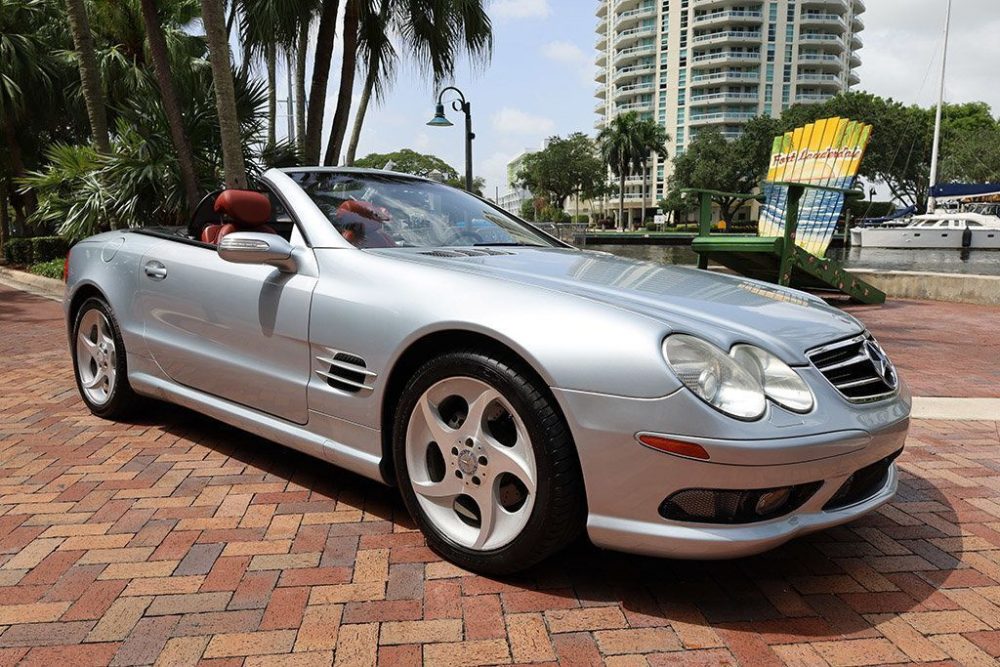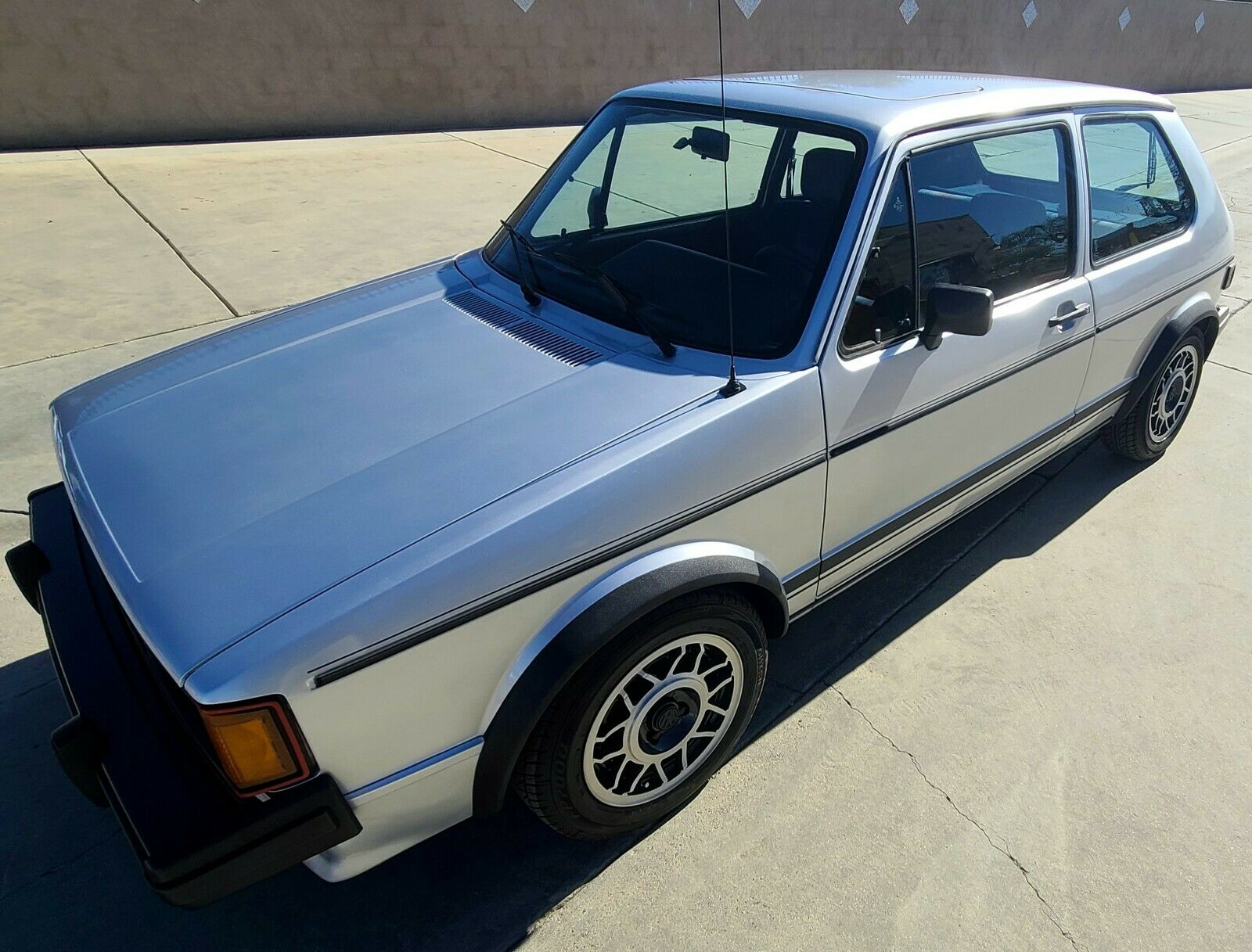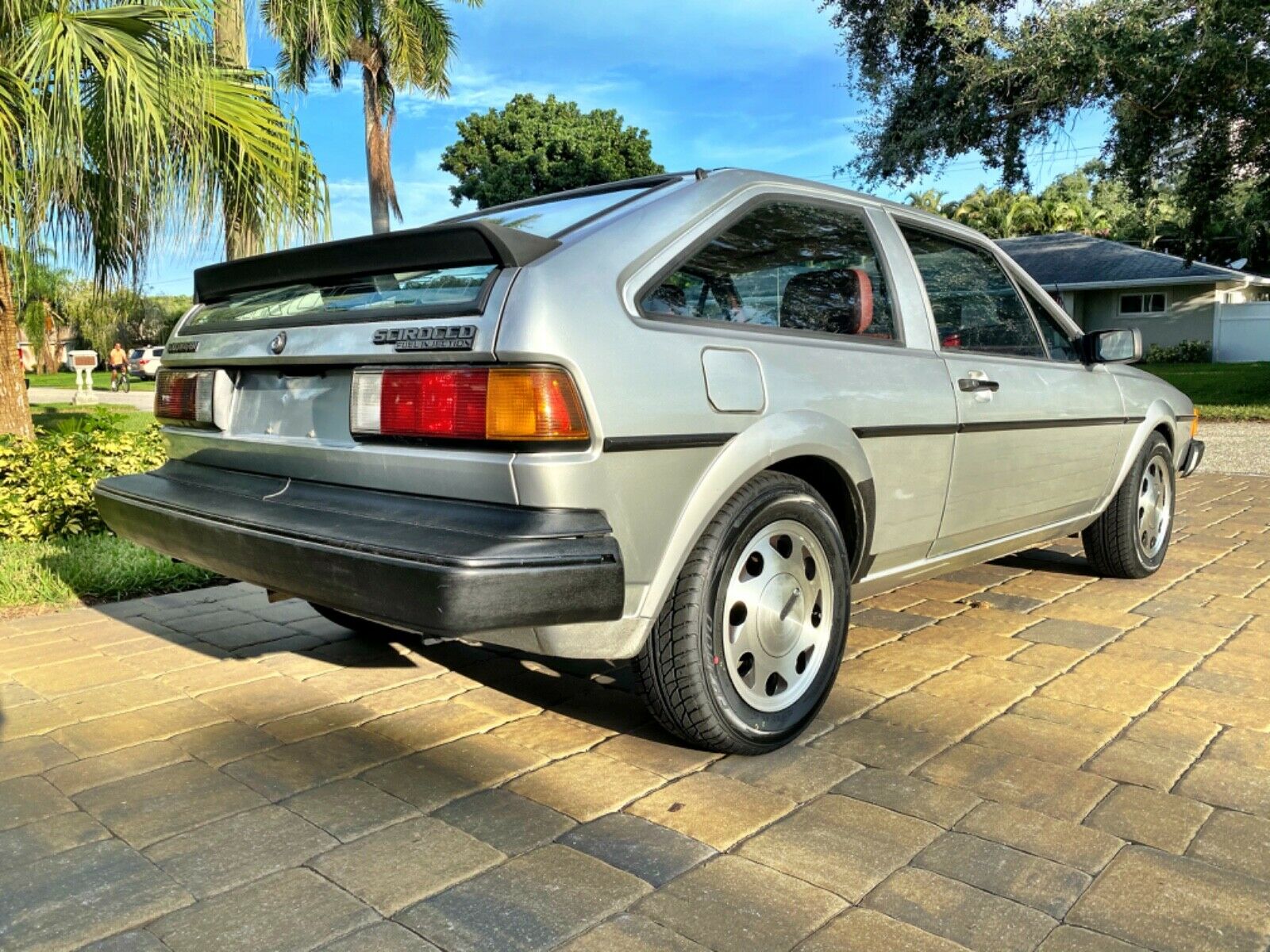It still makes me wonder why the R230 Mercedes-Benz SL-Class is so inexpensive. I know they are now 20 years old and very much considered “used” cars, but they are generally good in the grand scheme of cars that use to cost $100,000. I don’t think they’ve aged all that poorly considering when it was designed and built, and actual quality isn’t that bad either. Today’s car, a 2004 SL500 up for sale in Florida, has the classic look of understated on the outside but a totally wild interior.
Tag: Diamond Silver Metallic
This site contains Ebay partner affiliate links, which may earn us a commission at no additional cost to you.
1983 Volkswagen GTI
While the US-market GTI was somewhat watered-down and had chunkier styling than the truly Spartan European 1976 design, it was still a revelation in performance and universally heralded as the benchmark by which all other sporty economy cars would be based moving forward. At a time when there were few do-it-all type cars, the GTI managed to be nearly all things to all people; it got good fuel economy thanks to a relatively miserly 1.8 liter inline-4 with efficient fuel injection. It looked neat, thanks to 14″ alloy wheels, wide fender flared and blacked-out detail work with red accent stripes. It was functional and flexible, with fold-down seats and a (for its size) spacious hatch area to transport goods. It was usable year-round, with front-wheel drive allowing for decent snow traction. And the sport suspension, heavily bolstered seats and close-ratio transmission made the whole package an athletic alternative to the norm, allowing practical-minded men and women to fling their family car through corners with aplomb. Near universal was its appeal, and infectious were the ad campaigns, which in the Volkswagen tradition used short phrases to capture attention like “They’re going fast†and “Serious Fun†– even the oft-used “It’s a wolf in sheep’s clothingâ€.
So what do Germans do for fun? They love to drive. Preferably in a Volkswagen GTI. Because the GTI is designed to be fun. Not fun in the sense of a dashboard cluttered with all sorts of doodads. But fun in the sense of a precision machine that respects and answers its driver’s every wish.
Hyperbole? Certain, this is advertising after all. But it pointed towards the beautiful simplicity of the design, the functionality of the package, the elegance of the execution. The GTI didn’t pretend to be a Corvette like the Opel GT, or a luxury car like the Passat. It wasn’t competing with Mercedes-Benz, or even really Porsche, on any level. And that allowed the characteristically unfun Germans to let their hair down and have a bit of a ball:
CLICK FOR DETAILS: 1983 Volkswagen GTI on eBay
3 Comments1982 Volkswagen Scirocco
This Scirocco we looked at back in August is back on the block wearing teardrop 16V wheels and sporting a substantial price drop to $11,500 (from $17,900).
Though the shape of the new Scirocco was modern for the time, underneath the specification changed little from the outgoing model. It was still a Mk.1 underneath, with a 1.7 liter, 74 horsepower inline-4 providing adequate motivation to the 2,000 lb. coupe. Where the original Giugiaro design had held lovely nuance, the Karmann-penned follow-up borrowed heavily from the Asso di Picche design (ironically, also from Giugiaro) meaning it was all angles, everywhere. But it pulled it off reasonably well, and the second generation was quite popular, selling about a quarter million units in total. There were rolling changes throughout the years as more power, bigger spoilers and wheels, and even a more traditional second wiper appeared. But in terms of purity, the simple design shows through well despite the clunky U.S. spec bumpers on the early models like this 1982:
CLICK FOR DETAILS: 1982 Volkswagen Scirocco on eBay
4 Comments1983 Audi Quattro
While we’re on the subject of modified cars, this Quattro that I looked at back in February is back on the block. If nothing else, it’s nice to look back to a time just before lockdown – and the car isn’t bad, either!
Today’s post is not about how revolutionary the Quattro was. I’ve written plenty of those and I’m sure you’re tired of hearing about it. So instead, today’s post is more of a philosophical question.
At what point do modifications become sacrilegious?
There seem to be several camps of automotive enthusiasts; one seems to always be wrapped up in the biggest, brightest, and fastest things to come out. Another group embraces the history of automobiles and celebrates most who love the cars. And then there are the preservation people. They’re a very special group who deem it necessary to fault someone’s vision or personal preference in their expression of automotive enthusiasm.
Perhaps we transit through these groups as we age. I can certainly remember a point in my life where I was part of the newest and fastest group. I can remember moving into the second group as I attempted to modify my car to be a personal expression. And, more recently, I’ve found the appeal of originality much greater. I’ve certainly even poked fun at or criticized my fair share of cars. Which brings us to today’s example of a 1983 Quattro.
CLICK FOR DETAILS: 1983 Audi Quattro on eBay
7 CommentsRoll the Dice: 1983 Audi Quattro
Update 11/17/19: This Quattro sold for $18,600
Though the basis for what made the Quattro legendary; inspired racey styling, boxflares, turbocharging and all-wheel drive with a near-luxury interior seems almost trite, the Quattro really was a revolution in design. Some ten times more dear than an E30 M3, in recent years the Audi has gained a lot more respect in the marketplace. There are those that say you can’t really compare the Quattro to the M3, or even the 911 – though the pricing was quite similar. But isn’t that the point? In period, the other car you could have bought for the same money was a basic 911. And the market spoke: in 1983, Audi sold some 240 Quattros in the U.S.. Porsche, on the other hand, traded 5,707 911SCs between the Coupe, Targa and new Cabriolet models. There was basically no market overlap with the other two major contenders – the 944 Turbo and the M3. Both those cars, and the 911, were finished to a higher level of quality with better components, arguably, but the real difference was the type of owner who bought the Quattro versus the 911. These cars were built to be used and abused, and many were.
With only 664 brought here in total, and just 240 from the first model year, you’re going to have a pretty hard time finding one for sale at any given time – unlike the other three cars mentioned. That’s why it’s worth taking a look at one of the earliest U.S. chassis, even if it does come with a long list of needs. But that strong potential of heavy needs isn’t slowing bids down…








